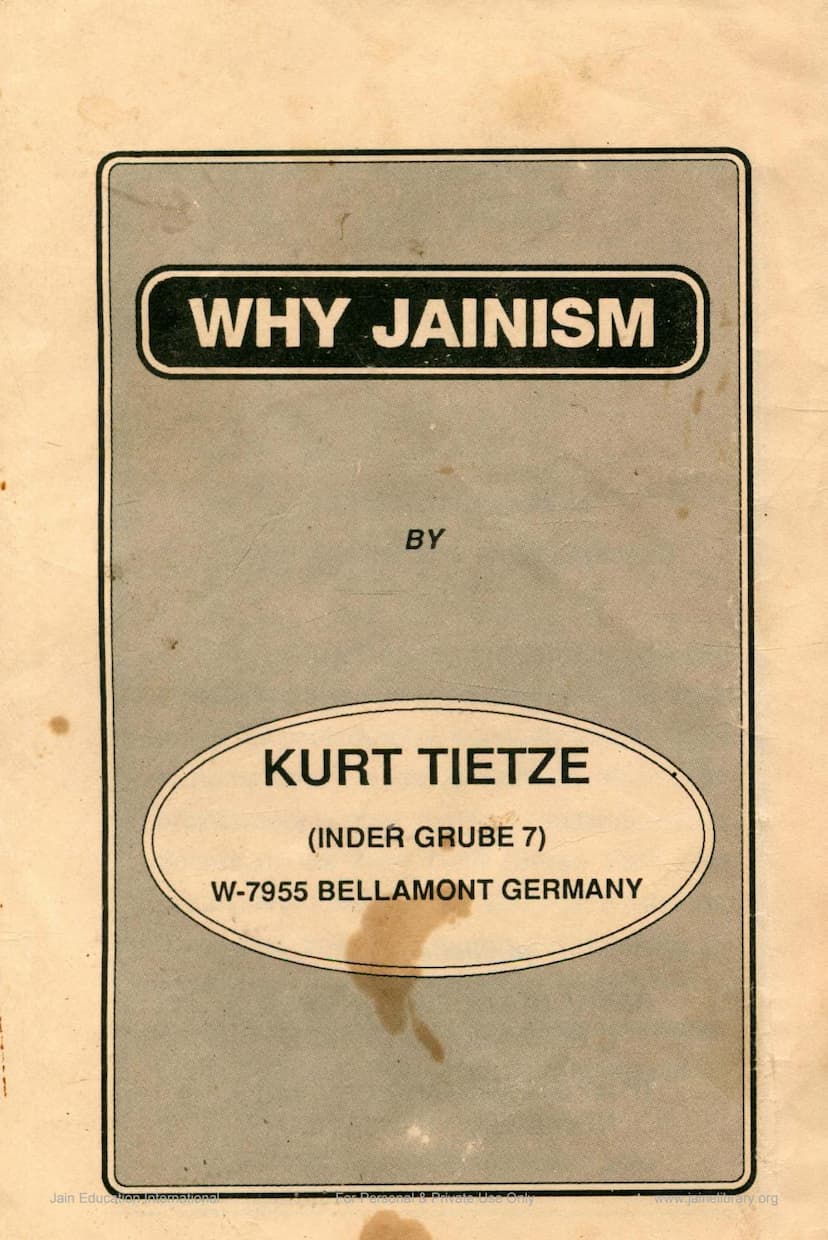Why Jainism
Added to library: September 2, 2025

Summary
This document, titled "Why Jainism" by Kurt Tietze and published by Ratnatraya Education and Research Institute, is essentially a personal account of how a Westerner became deeply interested in and appreciative of the Jain religion.
The author, Kurt Tietze, begins by explaining that the booklet is a response to the question of how a Westerner became drawn to Jainism, a religion of Mahavira. He shares an article he wrote titled "A Foreigner in Shravanabelgola" that was published in Gommatavani in February 1986, which details his initial encounters with Jainism.
Tietze's first significant encounter with Jainism occurred in 1968 during a pilgrimage through India. While he had visited various religious and historical sites, including Buddhist caves and ancient monasteries, it was the colossal statue of Bahubali (Gommateshwara) in Shravanabelgola that left a profound impression on him. He recounts feeling a deep connection to the landscape as he approached the site and, upon seeing the statue up close, felt that the moral potential of humanity had been made visible in an incomparable way. This experience ignited a desire to learn more about Jainism, the religion of the 24 Tirthankaras. He spent time in the library of the Shri Aurobindo Ashram in Pondicherry gathering initial information and climbed Vindhyagiri (where the Bahubali statue is located) multiple times to absorb the atmosphere and the spiritual force he sensed. He also explored Chandragiri, noting its Manastambha pillar, the Cave of Bhadrabahu, ancient inscriptions, and Jina images, all of which contributed to his growing interest. The experience left him with new words like "Jina," "Digambara," "Tirthankara," "Rishabha," "Mahavira," "Ahimsa," and "Jiva."
However, it was twenty years later, in 1988, that Tietze and his wife, Martha, embarked on an "exclusive pilgrimage to sacred centres of Jainism." This journey, unlike typical tourist trips, was a "revelation." They expressed their gratitude and appreciation in a letter to H.H. Charukeerty Bhattarak Swamiji of Shravanabelgola, which was published in Gommatavani in 1989.
The book then details highlights from this pilgrimage and subsequent ones. They were warmly received at various Jain centers and met with revered figures like Muni Chethan Sagar Maharaj and Acharya Vidyasagar Maharaj. They recount the strenuous but rewarding journey to Parasnath Hill in Bihar, where they were guided by Digambar pilgrims. Their visit to Rajgir included experiencing the hospitality of the Veeraitan Ashram and learning about their eye hospital. They also visited historical Jain sites like Hastinapur, Sanganer, Padampura, Kumbharia, Taranga, and the Digambar Temple in Ajmer.
A particularly moving experience was in Palitana, where they learned of the passing of Muni Somtilak Vijay, who had undertaken a challenging 480-day austerity. Despite not completing his vow, his dedication deeply impressed the Tietzes.
The narrative then shifts to a later pilgrimage in 1991-1992. A significant event during this period was their invitation to witness a diksha ceremony in New Delhi. They describe the profound experience of seeing a successful businessman renounce his worldly possessions and privileges to become a monk, guided by Jain teachings and an energetic young monk. This act of renunciation, they explain, is the very foundation of Jainism and a cause for celebration for its followers.
The Tietzes conclude that their participation in this diksha ceremony, from the pre-dawn temple rituals to escorting the newly ordained monk on his first begging-for-food round, greatly enhanced their esteem and understanding of Jainism. They assert that the question "Why Jainism?" has been answered affirmatively for them through their experiences, what they have seen, heard, and learned.